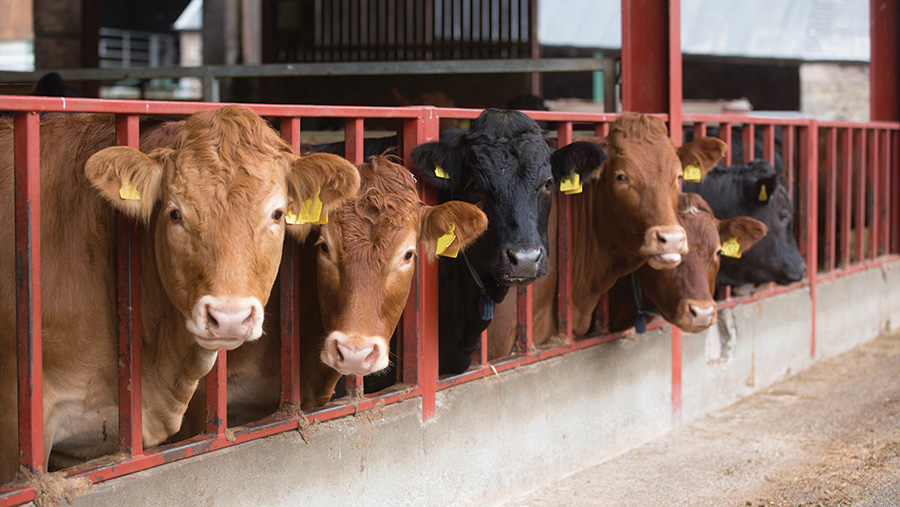Tackling IBR – non-marker versus marker vaccines
 © Tim Scrivener
© Tim Scrivener Infectious Bovine Rhinotracheitis (IBR) is a highly contagious, respiratory disease that can affect cattle of all ages. It is possible to protect herds using either a non-marker or marker vaccine.
Ian Cure, farm director at VetPartners, explains the difference between the two vaccine types and the potential benefits of using a marker.
See also: How to prevent IBR disease in your beef herd
Controlling IBR can be particularly challenging for farmers, as the virus remains within the animal for life, often without presenting any signs, says Mr Cure.
Broadly speaking with viral vaccines, the virus has been damaged in some way so it will not cause the clinical disease.
It will challenge the immune system to produce a response, which is then remembered by the body for a certain amount of time depending on the product used.
What is a marker vaccine?
A marker vaccine contains gene deletions which helps vets to determine the difference between an animal that has been vaccinated, and an animal that has been exposed to a wild IBR virus.
From this, you can understand the true status of the animals from an IBR point of view.
We can tell from diagnostic tests, whether the animal has been vaccinated and never exposed to the virus, or whether the animal has been exposed to the disease as well as being vaccinated, ie. whether the wild virus is likely still circulating within a herd.
What is a non-marker vaccine?
The difference with a non-marker vaccine is, although the animal will benefit from having protection against clinical IBR, you won’t be able to tell whether the positive test diagnosis was produced by the non-marker vaccine or the IBR virus.
What are the key benefits of a marker vaccine?
Marker vaccines allow us to determine the disease status of a herd for IBR. In our veterinary practice we use the IBR marker test so we can tell whether a result is positive or negative for a wild virus, regardless of a vaccination plan being implemented.
This is important when aiming to eradicate IBR, using vaccination and strict biosecurity.
For that reason, we only sell marker vaccines as it is a good way to screen herds and know whether vaccination and biosecurity protocols are making a difference.
When using a marker vaccine, over time IBR levels should decrease as more animals are protected by the vaccine.
If you were using a non-marker vaccine the test would stay positive all the time, because you cannot differentiate between the two.
Now that marker vaccines are available, there is no point in using non-marker IBR vaccines, because they affect your ability to know whether you’re controlling the virus.
What vaccines are available?
There are two types of vaccines available which contain only IBR: inactivated and live marker vaccines. However, some multivalent pneumonia vaccines contain IBR, which is not a marker vaccine.
How does using marker vaccines benefit farmers?
IBR is different to other diseases because animals can be carriers and not show any clinical signs.
During times of stress, for example calving, animals may start to shed the virus, which is why it is important to continue vaccinating.
Farmers will ultimately want to get to a point where they have culled out the chronically infected cows, as they will be more prone to other diseases.
Marker vaccines are of benefit because farmers can identify the chronically infected animals and remove them.
It is important to keep up to date with your vaccines and do them regularly, dependent on infectious pressure on your farm (this should always be discussed with your own vet).
This is especially important if you are planning to keep cattle as breeding animals.
Are marker vaccines used for any other diseases?
No, not yet. Currently this vaccination is only used for the IBR virus due to its ability to remain in the animal’s body, so it is of interest to know herd disease status.
Are there any common misconceptions surrounding IBR marker vaccines?
Current vaccinations on the market are administered either intranasally or through an intramuscular injection. Intranasal route take effect within 2-4 days, whereas intramuscular vaccines take around a week.
Some people believe intramuscular vaccines aren’t as effective, however, the only difference is the time it takes for the onset of immunity which in an outbreak situation will be crucial.
